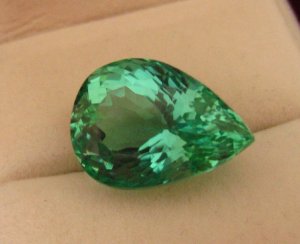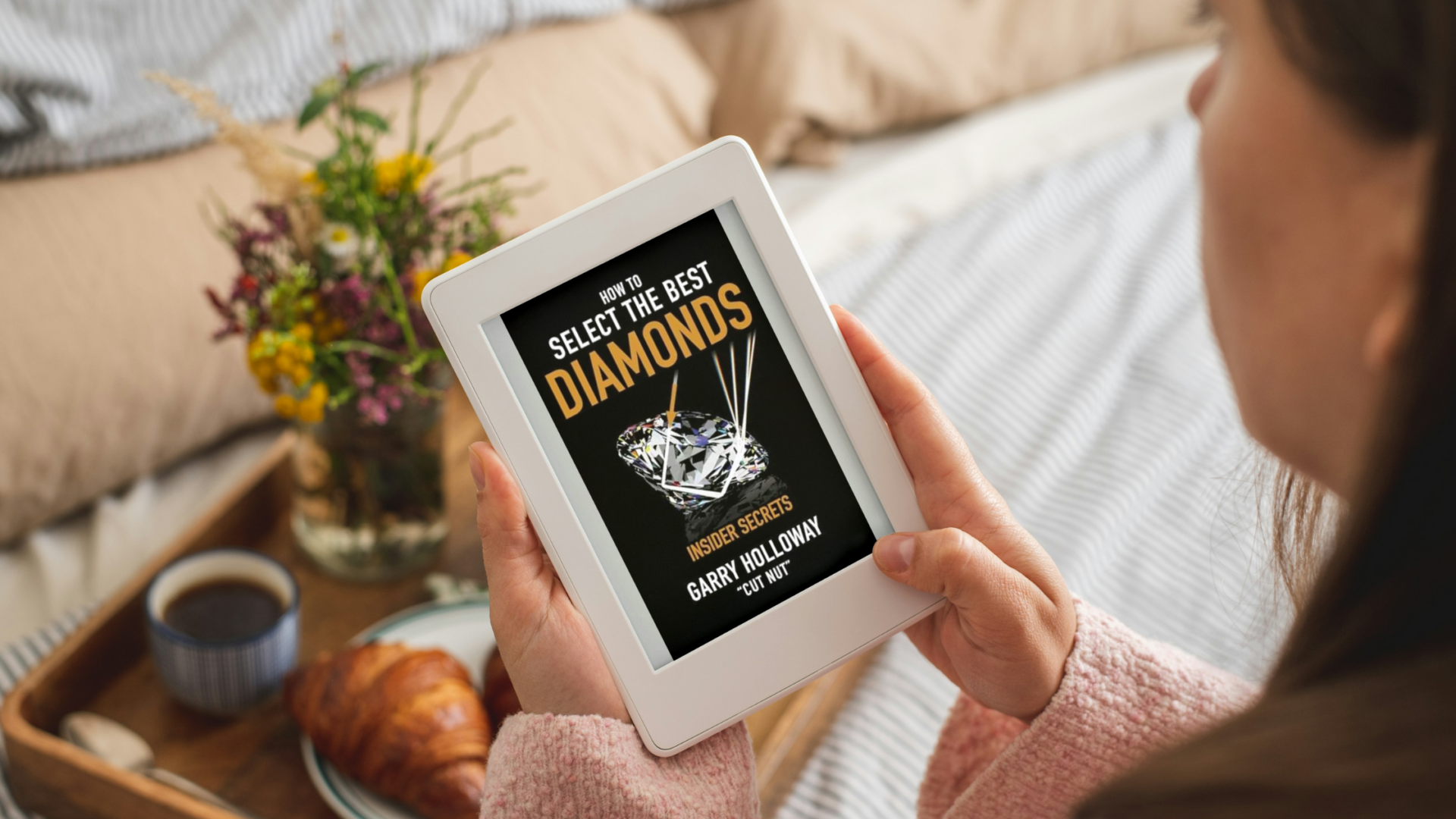Hi, I know that green amethyst is prasiolite. I'm not talking about rare natural prasiolite, but about purple amethyst that was heated to produce the light green stone commonly known as green amethyst.
I adore this stone. I love the beautiful seafoam green, which reminds me of the ocean, and I also think it's an incredibly tasteful shade. I have numerous pieces of green amethyst set in silver which were all very inexpensive, and one pair of green amethyst pear drop earrings set in 18kt gold from an expensive jeweler, Kiki McDonough. Last night I bought a really stunning large green amethyst ring set in silver. It was incredibly inexpensive - so cheap that I won't mention the price because I fear you'll think badly of it when I show it in SMTB! But it's a large, green, sparkly stone, and I adore it.
So imagine my consternation when I go to read a little more about green amethyst and I see that it fades in sunlight! I have researched green amethyst before and never come across this. Kiki McDonough sells green amethyst pieces for around 1000-7000 American bucks (although my Kiki green amethyst earrings were nothing like that price) and if green amethyst faded, surely she'd be plagued by angry customers saying how their stones had changed color?
Does this fading happen only if someone wears the stone regularly in direct sunlight on a ninety-degree day? Or does it happen with weak sunlight all year round? I live somewhere with long, cold, snowy winters, and while it can get very hot briefly in the summer, I don't really wear my jewelry on a very hot day as I just don't want my nice stuff getting all sweaty. I don't wear my jewelry to the beach or pool, and I don't take it on vacation.
Would wearing it around town on a sunny day at around 80 degrees fade it? I'm just confused over how much heat and sun is needed to cause this fading, and if you really have to expose it relentlessly for the fading to happen, or if casual summer wear can do it? Is fading a real threat, or is it something that "can" happen but in fact rarely does, unless you expose it heavily to the sun over a long period of time?
Thanks xxx
I adore this stone. I love the beautiful seafoam green, which reminds me of the ocean, and I also think it's an incredibly tasteful shade. I have numerous pieces of green amethyst set in silver which were all very inexpensive, and one pair of green amethyst pear drop earrings set in 18kt gold from an expensive jeweler, Kiki McDonough. Last night I bought a really stunning large green amethyst ring set in silver. It was incredibly inexpensive - so cheap that I won't mention the price because I fear you'll think badly of it when I show it in SMTB! But it's a large, green, sparkly stone, and I adore it.
So imagine my consternation when I go to read a little more about green amethyst and I see that it fades in sunlight! I have researched green amethyst before and never come across this. Kiki McDonough sells green amethyst pieces for around 1000-7000 American bucks (although my Kiki green amethyst earrings were nothing like that price) and if green amethyst faded, surely she'd be plagued by angry customers saying how their stones had changed color?
Does this fading happen only if someone wears the stone regularly in direct sunlight on a ninety-degree day? Or does it happen with weak sunlight all year round? I live somewhere with long, cold, snowy winters, and while it can get very hot briefly in the summer, I don't really wear my jewelry on a very hot day as I just don't want my nice stuff getting all sweaty. I don't wear my jewelry to the beach or pool, and I don't take it on vacation.
Would wearing it around town on a sunny day at around 80 degrees fade it? I'm just confused over how much heat and sun is needed to cause this fading, and if you really have to expose it relentlessly for the fading to happen, or if casual summer wear can do it? Is fading a real threat, or is it something that "can" happen but in fact rarely does, unless you expose it heavily to the sun over a long period of time?
Thanks xxx





300x240.png)